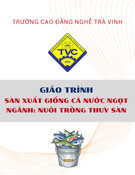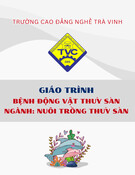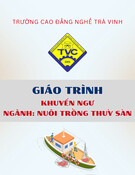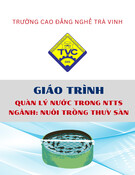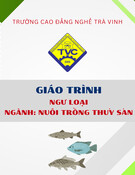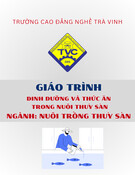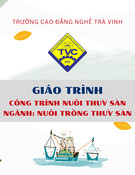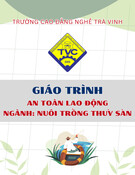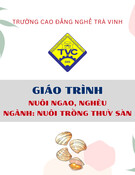
Vietnam Journal
of Agricultural
Sciences
ISSN 2588-1299
VJAS 2022; 5(3): 1571-1585
https://doi.org/10.31817/vjas.2022.5.3.06
https://vjas.vnua.edu.vn/
1571
Received: February 27, 2021
Accepted: June 10, 2022
Correspondence to
nhnhuan@vnua.edu.vn
ORCID
Nguyen Van Huong
https://orcid.org/0000-0002-0386-
7158
Nguyen Huu Nhuan
https://orcid.org/0000-0003-0747-
5474
Marketing Channels of Freshwater
Aquaculture Fish in the Red River Delta of
Vietnam: A Case Study in Hai Duong
Province
Nguyen Van Huong1, Nguyen Huu Nhuan2*, Philippe Lebailly3 &
Tran The Cuong2
1Faculty of Accounting and Business Management, Vietnam University of Agriculture,
Hanoi 131000, Vietnam
2Faculty of Economics and Rural Development, Vietnam University of Agriculture, Hanoi
131000, Vietnam
3Gembloux Agro BioTech, University of Liège, 4020 Belgium
Abstract
Freshwater aquaculture has played key roles in the livelihood
development of farm households in the Red River Delta through
freshwater fish ponds, rice-and-fish, and marine cage culture. A
market-driven approach is being addressed more and more in
promoting new production. This study aimed to analyze the
marketing channels of freshwater aquaculture fish in Hai Duong
province. The study was conducted with 151 farm households
belonging to three fish production system: Fish system engaging fish
production only (FS); animal fish system combining animal and fish
production (AF) ; and new garden-pond-animal house system (VAC)
in the province. The attained results reveal that fish farmers
diversified their marketing strategies to obtain a marketing margin of
about 87% of the retail price of the finfish along with their value
distribution while the remaining portion of the marketing margins
belonged to the intermediary market actors. The cost of the purchased
fish commodities accounts for the majority of the total cost for all
actors. The cost of dead fish presented the highest proportion of the
total marketing cost. A large portion of the marketing costs
represented wages, fuel, and the rent of a business place. The
marketing margin for the intermediary stakeholders in both the
studied channels was 12.7%, in which marketing costs accounted for
approximately 5.0%. The results will be used for designing better
promotion strategies for freshwater fish production and providing
good lessons for small-scale fresh aquaculture development towards
livelihood diversification and development in rural areas.
Keywords
Marketing channels , analysis, freshwater aquaculture, fishes, Red
River Delta

Marketing channels of freshwater aquaculture fish in the Red River Delta of Vietnam: A case study in Hai Duong province
1572
Vietnam Journal of Agricultural Sciences
Introduction
In Vietnam, fish has recently become one of
the main food items in people’s diets because it
is a major source of protein, minerals, vitamins,
and micronutrients (Kawarazuka & Béné, 2011).
The tropical and monsoonal climate, and a wide
range of low depth water bodies, long coastlines,
and preferable conditions make Vietnam a
dreamland for freshwater aquaculture. These
conditions are the main reasons for the high and
rapid levels of fish production with over 500,000
aquaculture farms in Vietnam occupying more
than one million hectares, and the number of
farms has doubled since 2000. The total annual
fish production was estimated to be
approximately 6.72 million tons in 2016. The
country’s aquaculture sector generates an
estimated 3.0 billion US$ per year and this sector
employs more than 1.6 million people full time,
a majority of whom are women (Uyen, 2018).
Freshwater aquaculture in the Red River
Delta, Vietnam, vastly depends on different types
of carp and freshwater fish, but no individual
species is able to provide a high level of
production or high profits. Different fish
producers try to maximize their profits and
production with their available resources and
species. Among all the carp species, freshwater
fish are the most suitable choice for farmers
(Nguyen Ngoc Thach, 2002). With a high
demand for fish food, freshwater fish cultivation
can balance the gap between supply and demand
of food sources (Fao, 2011). Therefore, the
opportunities for cultivation of several
freshwater fish species have significant potential
in Vietnam. Particularly, the rapid growth of a
population with high fish demands has caused an
immense gap between demand and supply.
Enhancing the marketing system is extremely
needed (Thang & Linh, 2014).
In the Red River Delta of Vietnam, fish
markets are available in both rural and urban
areas, of which, Yen So is the largest wholesale
market of freshwater fish for domestic
consumption. By tracking the marketing system
of fish, Ikeguchi identified the main stakeholders
associated with distribution, namely fish farmers,
suppliers, traders, and laborers (Ikeguchi, 2007).
In rural areas, the fish market consisted of several
involved intermediaries such as fish farmers,
collectors, wholesalers, and retailers (Mai Thi Kim
Khanh, 2012). Through the distribution system,
fish were traded through different intermediaries
such as local middlemen, traders, and retailers, etc.
A high proportion of the fish traded were recorded
for the traders while the local retailers purchased a
small percentage of low quality fish directly from
the farmers (Van Huong, 2020).
A number of constraints were identified in
the present domestic fish marketing channels,
which form the basis of recommendations for the
improvement of the present marketing
arrangements (Lem et al., 2004). These include
the establishment of fish wholesale markets in
large urban areas, a build-up of well-functioning
assembly markets at important fish landing sites,
improvement of the legal framework for the
operations of fish wholesalers, establishment of
information systems of fish market prices,
encouragement of contract farming/trading
systems among fish market operators certified by
local authorities, upgrading fisheries statistics
systems for better fish market planning,
development of a domestic fish market strategy,
and improvement of a coordination mechanism
for the public sector for fish marketing and fish
market management (Tracey-White, 1991;
Burny, 2000; Howieson et al., 2016; Hop &
Burny, 2017; Pascual-Fernández et al., 2019).
Therefore, this paper aims to analyze the
marketing channels and define the marketing
cost share along the supply chain of freshwater
fish from production to retailers in rural and
urban markets. The study results could be used in
the design of promotion strategies for freshwater
fish production in Hai Duong province and many
parts of Vietnam where freshwater fish play a
vital role in food and foodstuff provisions for
domestic demand both in local and urban areas
(Lebailly et al., 2015). Our findings could not
only be a good reference for the provincial
authorities and policymakers to enhance their
promotion strategies of freshwater aquaculture
production in Vietnam but also provide
contributions to the enrichment of the literature
and methodologies for understanding small-scale
fresh aquaculture farming in delta regions.

Nguyen Van Huong et al. (2022)
https://vjas.vnua.edu.vn/
1573
Methodology
Sample size and data collection
The study was designed to explore the
production and marketing channels of freshwater
aquaculture fish at diversified and developed
sites in Hai Duong province. The first step of the
study was selecting four developed and
diversified villages from four communes in two
districts in the province for freshwater
aquaculture production at the household level
due to the limitation of the secondary data
(reports or records). Therefore, Cam Giang and
Tu Ky were selected for the study investigation
at the production stage (see Figure 1). The
samples are presented in Table 1, which shows
the three targeted groups of fish system (FS; 51
households), animal-fish system (AF; 65
households), and the new garden-pond-animal
house system (VAC; 35 households).
In the marketing and distribution stage, a
rapid market appraisal was carried out to
understand the marketing channels, market
participants, and marketing activities associated
with fish commodities produced by the
aquaculture households in the selected survey
sites. The participatory method was conducted in
parallel with semi-structured questionnaires to
collect the data and information. The
participatory method was used to explore the
marketing channels, market organization, and
nature of marketing activities by tracking the
flow of the sold fish commodities. Group
discussions with key fish farmers in every village
about the actuality of farm gate wholesaling were
normally attended by two frequently contacted
fish traders who then were selected for semi-
questionnaire interviews at each of the selected
survey villages. Two farm collectors - local
villagers engaged in wholesale purchasing of fish
at the aquaculture producers’ farm gate were
selected in each of the four villages, hence, eight
farm collectors in total were interviewed
(Table 1).
Source: Vietnam department of survey and mapping (2015)
Figure 1. Site selection of two districts in Hai Duong province

Marketing channels of freshwater aquaculture fish in the Red River Delta of Vietnam: A case study in Hai Duong province
1574
Vietnam Journal of Agricultural Sciences
Table 1. The sample sizes of the targeted groups for marketing channels of the freshwater fish commodities in Hai Duong
Target group
Sample size
Fish farmer
151
Farm collector
8
Commission wholesaler
10
Merchant wholesaler
10
Retailer
10
Total
205
In the second stage (38 market stakeholders),
the rapid market appraisal method was applied
to understand the flow of the fish outputs going
into the markets, and then to identify the main
marketing channels of the sold fish commodities
in the research region. This method could also
help to estimate the fish producers’ share in the
consumer’s price, marketing costs, and margins
of market participants along the main marketing
channels of the fish commodities in the study
areas. Moreover, the marketing strategies,
marketing activities, and encountered problems
of the fish producers and the main marketing
actors could be understood and analyzed such as
the scale of production, product quality, price
settings, market demands, bargaining power, and
other concerns that may be linked to the
economic efficiency of small-scale aquaculture
operated by fish farmers in Hai Duong province.
Data analysis
Farm budget analysis
Economic efficiency is defined as the
difference between total revenue and total cost.
In order to examine how profitable small-scale
aquaculture is for fish farmers in Hai Duong, the
farm budget technique introduced by Engle
(2012) was employed for data analysis.
Households’ farming enterprises may or not be
profitable as the total cost can be higher than the
revenue generated from fish production. A
similar approach was employed for other farming
activities to estimate the total whole farm income
for each fish household.
Marketing channel analysis
Kotler et al. (2014) defined direct marketing
channels as a method of marketing commodities
directly to the consumer, which are used by
manufacturers/producers with no middle man or
intermediary involved. When one or more
middlemen participate in the marketing chain, it
is referred to as an intermediated marketing chain
or channel. On the other hand, the marketing of
live fish outputs practiced by smallholder
farmers is complex and has diverse activities
including direct sales, which might concern the
various intermediate marketing actors, and one
could consider the direct marketing channel as
corresponding to the direct sale of fish outputs to
consumers accomplished by fish farmers (Edoge,
2014).
In this study, a market survey focusing on the
marketing of freshwater fish outputs from the
Small-Scale Aquaculture (SSA) models
employed the market rapid appraisal with the
participatory approach. This approach enabled
the market participants to identify their
characteristics, marketing costs, marketing
margins, and other activities involved in the
marketing of freshwater fish outputs in Hai
Duong province. The market data and
information of the marketing activities which
were directly associated with the freshwater fish
farmers and market participants, along with the
marketing channels, were gathered, analyzed,
and discussed in the study region. The flows and
the marketing channels of the fish commodities
marketed by fish farmers, including the market
participants along the marketing channels, were
then mapped based on the participatory
discussions of the involved market participants.
In order to deeply understand the economic
benefits of each market participant in the
marketing channels of the live fish commodities,
the fish farmers’ share in the retail prices and the

Nguyen Van Huong et al. (2022)
https://vjas.vnua.edu.vn/
1575
profitable levels of the business in fish trading,
which were accounted for by fish farmers and the
market participants along the marketing
channels, were calculated, analyzed, and
discussed for the further conclusions and
implications in the study. Thus, the cost-benefit
method was mainly used to calculate the
marketing costs and margins of the market
participants. These study calculations were
examined by the T-test and ANOVA tests, which
significantly supported the conclusions and
implications such as the direct sales of fish
outputs, the differences in farm gate prices of fish
commodities associated with the grading
involvement with market demand and
requirements, and the differences in the fraction
of the “premium quality” fish outputs concerning
the differences in the net returns of fish
commodities from the SSA models in Hai Duong
province.
The Likert scale method was used to
measure and understand the negotiation
competencies between the fish farmers and fish
traders referring to the internal capacity of fish
farmers during the marketing of their farmed fish
outputs and to examine the satisfaction levels of
fish farmers with their current marketing
situation of fish outputs referring to the external
factor of the marketing constraints and problems
encountered in the study areas. Thus, the
average scale of 3.0 of the decision rule was
applied to make the argument and conclusions
accordingly.
This rule can be considered as follows:
Decision point: < 3.0 => Rejected
> 3.0 => Accepted
Decision rule: = (Σ x) /n =
(5+4+3+2+1)/5 = 15/5 = 3.0
Where = mean
Σ = summation
x = value Likert points
n = number of respondents
Calculating marketing cost
The marketing cost of a product/service
refers to the expenses incurred by different
middlemen in the process of performing various
marketing functions to move the product/service
from producers to the end consumers (Khan &
Raha, 1999). Different marketing stages of the
fish commodities incurred several related costs
such as the costs of shop rent/land tax, fuel,
materials (ice, salt, water, and electricity, etc.),
wages (hired laborers), repairs and maintenance
(motorbikes and trucks), transportation (hired
shipments of fish commodities), transactions
(telephone bill, etc.), interest (loans and credits),
taxes and fees (transportation tolls and market
fees), wastage (loss of dead fish), and
miscellaneous expenditures. The total marketing
cost calculated in this study included the cost of
the fish sales with farm gate prices paid by the
fish farm collectors and all related costs incurred
by the number of market participants in the
marketing channel. However, the study mainly
calculated the marketing costs of the market
participants at each stage along with the
marketing channel to determine their marketing
margin based on 100kg of mixed fish
commodities due to the fact that the fish
commodities were produced in the poly
production system with different farmed fish
species in Hai Duong province.
Fish farmer’s share in the retail price
The fish farmer’s share in the retail price was
the cost of the purchased fish commodities paid
by fish farm collectors in the absolute calculation
which was expressed as the percentage between
the price received by the producer/farmer (Pf)
and the price paid by the consumer (retail price -
Pr). The fish farmer’s share in the retail price was
also calculated on a basis of 100 kg of mixed fish
commodities which represented the basic unit of
the calculations and comparisons in the entire
discussion of this market survey.
Marketing margin
The marketing margin of fish trading was
determined by the difference between the value
of 100kg of mixed fish commodities which were
ready for sale from the farm gate of the fish
farmers and the cash amount received by the fish
retailers from the fish buyers based on the same
calculation with 100kg of fish commodities in
the retail markets. The absolute marketing
margin of a market participant was the difference
between the total payment (the marketing costs +



![Kỹ thuật nuôi thâm canh cá lóc trong ao đất: Tài liệu [chuẩn/mới nhất]](https://cdn.tailieu.vn/images/document/thumbnail/2025/20250724/kimphuong1001/135x160/3731753342195.jpg)



![Kỹ thuật nuôi cá nâu trong ao đất: Tài liệu [Mới nhất]](https://cdn.tailieu.vn/images/document/thumbnail/2025/20250723/vijiraiya/135x160/29781753257641.jpg)
![Kỹ thuật nuôi cá mú trong ao đất: Tài liệu [Mới nhất]](https://cdn.tailieu.vn/images/document/thumbnail/2025/20250723/vijiraiya/135x160/85681753257642.jpg)

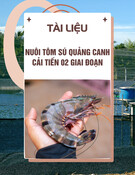


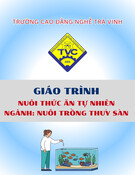
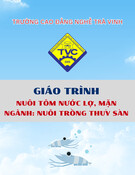
![Giáo trình Sản xuất giống tôm nước lợ, mặn (Trung cấp/Cao đẳng) - Trường Cao đẳng nghề Trà Vinh [Mới nhất]](https://cdn.tailieu.vn/images/document/thumbnail/2025/20251115/kimphuong1001/135x160/76031763179346.jpg)

